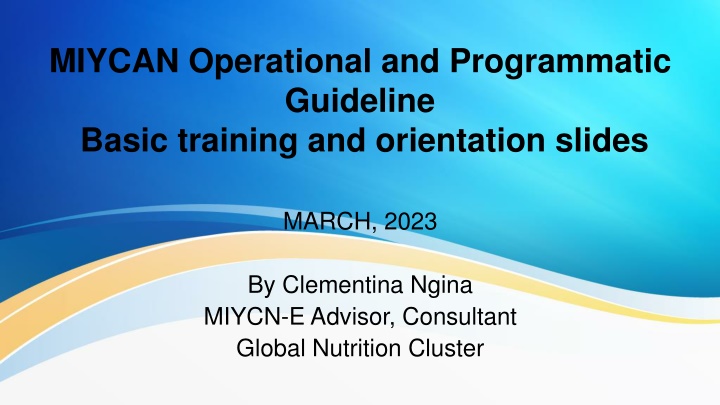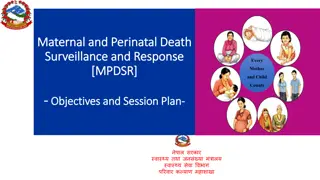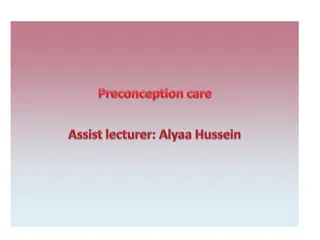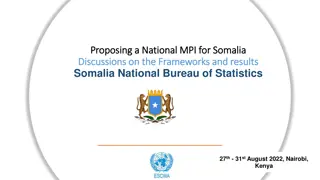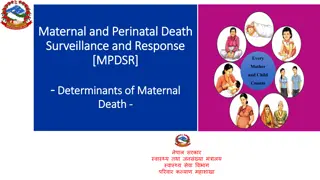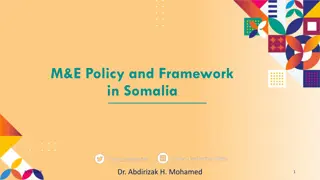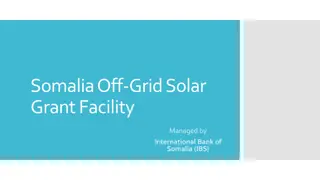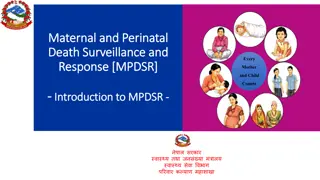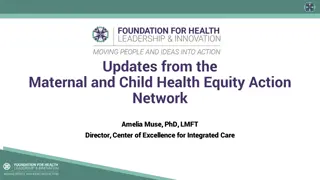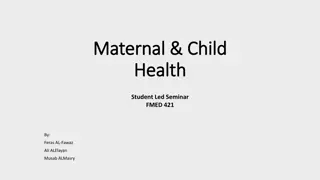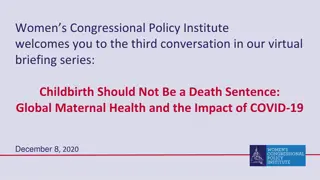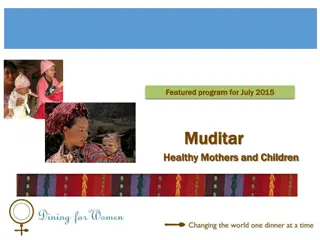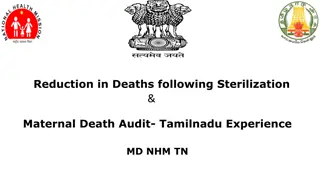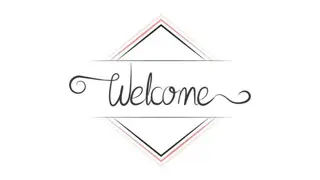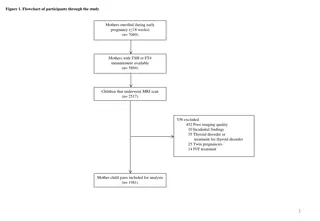Improving Maternal and Child Nutrition in Somalia: Challenges and Solutions
Addressing the nutritional challenges faced by women and children in Somalia, including high rates of anemia, inadequate breastfeeding practices, and malnutrition. Factors contributing to malnutrition such as poor diets, limited access to essential services, and gender inequalities are highlighted. Strategies to enhance nutritional status and promote healthier practices are crucial for combating these issues.
Download Presentation

Please find below an Image/Link to download the presentation.
The content on the website is provided AS IS for your information and personal use only. It may not be sold, licensed, or shared on other websites without obtaining consent from the author.If you encounter any issues during the download, it is possible that the publisher has removed the file from their server.
You are allowed to download the files provided on this website for personal or commercial use, subject to the condition that they are used lawfully. All files are the property of their respective owners.
The content on the website is provided AS IS for your information and personal use only. It may not be sold, licensed, or shared on other websites without obtaining consent from the author.
E N D
Presentation Transcript
MIYCAN Operational and Programmatic Guideline Basic training and orientation slides MARCH, 2023 By Clementina Ngina MIYCN-E Advisor, Consultant Global Nutrition Cluster
Background Global Context Estimated 14% of adolescent girls gave birth before age 18 in 2021 Estimated 170 million women are underweight In LMICs adolescents 15 19 years of age, 21 million pregnancies with approximately 50% unintended 610 million are overweight 40% anaemic (South East Asia (49%), Africa (46%) Mediterranean (41%) of pregnant women are and the Eastern
Background and Context cont. 47% initiated to breastfeeding within one hour of birth 48% exclusively breastfeed 70% breastfeed their infant for at least one year 45% breastfeeding by two years of age declined
Background & Context: Women s Nutritional status in Somalia Causes Anaemia prevalence 40% of pregnant women Gaps in preconception care Poor quality diets Insufficient access to essential nutrition services Suboptimal practices Nutritional Status of Women 100% 90% 80% 70% 60% % Prevalence 48% 50% 40.20% 40% 40% 30% 22% 20% 15% 11% 10% 0% Thin Overweight Obese Anemic Anemic Anemic Somalia Women's Nutritional Status Global Africa Source: FAO
IYCN & Nutritional Status of children in Somalia 100% 90% 80% 70% 60% 60% 60% 47% 50% 41% 40% 34% 33% 28% 30% 21% 20% 13% 10% 5% 0% Early initiation of breastfeeding Exclusive breastfeeding 0 - 5 months Introduction to complementary food 6 - 8 months Minimum dietary diveristy Minimum meal frequency Minimum Acceptable Diet Anaemic Consumed foods rich in Vitamin A Consumed foods rich in Iron Bottle fed
Causes of Malnutrition Contributors to malnutrition- global Poor quality diets Insufficient access to essential nutrition services Suboptimal practices Gender inequalities Causes of micronutrient malnutrition in Somalia include; Household food insecurity Inadequate care Unhealthy household environment Lack of health services Low education levels or illiteracy High poverty levels Severe drought Source: UNICEF Somalia- Knowles Coursin
Adolescent health Global Adolescent pregnancies 14% 50% of pregnancies unintended GBV affects 1 in 3 women Somalia Adolescents at high risk of; Child marriage Early pregnancy Female Genital Mutilation/Cutting (FGM/C) Risk factors for GBV; Mental health issues; multiple displacements, flooding, droughts and armed conflicts. 93% of GBV cases in women, adolescent girls and children Exposure to GBV contributes to suboptimal nutrition outcomes e.g. stunting, LBW and sub optimal breastfeeding.
Global Targets Reduce stunting among under 5s by 40% Reduce anemia in women of reproductive age by 50% Reduce low birth weight by 30% No increase of childhood overweight Increased rates of EBF in the first six months by up to at least 50% Reduce and maintain childhood wasting by 5%
Goal and Objectives Goal Reduce all forms of malnutrition in children < 5 years of age, adolescent girls, pregnant and lactating women in Somalia by enhancing, knowledge, skills and competencies to improve the health and nutrition. Objectives Provide guidance to HWs & CHWs in protection, promotion, & support for optimal MIYCAN Improve knowledge, skills, & competencies of MIYCAN among HWs & CHWs Enhance integration of MIYCAN interventions within existing health & community services and across sectors. Enhance optimal MIYCAN in difficult circumstances. Promote gender mainstreaming in MIYCAN interventions. Enhance community linkages and referrals.
Guiding Principles Implementation within the human rights context including; Mother & child care is a legal duty of the state in Article 28 (2) family care in the Constitution of Somalia Every child has the right to care from their parents Strengthening Gender & Social Equity Building Resilience of households with mothers, infants, young children & adolescents Life-cycle approach to MIYCAN interventions Public health approach to MIYCAN Comprehensive, integrated & equitably distributed interventions Adherence to the international code of marketing of breastmilk substitutes
Scope of the Implementation Guidelines Maternal nutrition in pregnancy and lactation Adolescents nutrition Infant and young child nutrition Micronutrient supplementation Feeding in difficult circumstances Growth Monitoring and Promotion Infant and Young Child Feeding in Emergencies (IYCF-E) Breastmilk substitutes (BMS) Counselling Roles and responsibilities of different stakeholders Linkages and referrals Monitoring and evaluation
